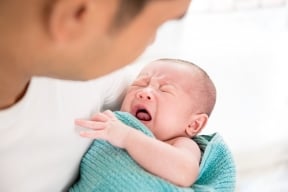What You Need To Know About RSV
Respiratory Syncytial Virus (RSV) is a highly contagious virus that can affect individuals of all ages and is especially prevalent during “RSV season” between September and January. While many people experience mild, cold-like symptoms, RSV can cause serious complications in certain populations, particularly infants and older adults.
In healthy children and young adults, RSV often resembles the common cold or flu. “For the average child to young adult, they may have a runny nose, cough, a little upper airway congestion. Sometimes, they can even be asymptomatic,” explains Dr. Apryle Kennedy, a Neonatologist with McLeod Health. “But when you are younger, particularly under six months old, you can have more severe symptoms such as shortness of breath, difficulty breathing and decreased feeding. We can also see a symptom called apnea where the babies can have a pause in their breathing and not breathe at all for a short time.”
Dr. Kennedy points out that “RSV is the leading cause of hospitalizations in infants less than 12 months old.” For babies this young, RSV can affect not just the upper airways, but also the lower respiratory tract. “It can cause more than an upper airway congestion or stuffiness; patients can actually have lower airway problems with difficulty breathing, wheezing, coughing and shortness of breath, which in many cases, leads to hospitalization,” she said.
In infants under two months of age, one of the most concerning symptoms of RSV is apnea. Dr. Kennedy emphasizes the importance of recognizing this potentially life-threatening sign: “In babies two months of age or younger, apnea can be a concerning sign. The baby may stop breathing for a short period of time, which can be extremely dangerous.”
For most, RSV is relatively mild and resolves on its own with rest, hydration and supportive care. However, it’s important to watch for signs that symptoms are worsening, such as difficulty breathing, a persistent cough or excessive tiredness.
Parents of newborns should be vigilant for any pauses in their baby’s breathing, as well as other signs of distress such as a bluish tint to the skin, poor feeding or unusual irritability. Immediate medical attention is necessary if apnea or other serious symptoms occur.
Find a pediatrician near you.
-
McLEOD REGIONAL MEDICAL CENTER FLORENCE
843-777-2000 -
McLEOD DARLINGTON
843-777-1100 -
McLEOD DILLON
843-774-4111 -
McLEOD LORIS
843-716-7000 -
McLEOD SEACOAST
843-390-8100 -
McLEOD CHERAW
843-537-7881 -
McLEOD CLARENDON
803-433-3000



-
McLEOD REGIONAL MEDICAL CENTER FLORENCE
843-777-2000 -
McLEOD DARLINGTON
843-777-1100 -
McLEOD DILLON
843-774-4111 -
McLEOD LORIS
843-716-7000 -
McLEOD SEACOAST
843-390-8100 -
McLEOD CHERAW
843-537-7881 -
McLEOD CLARENDON
803-433-3000
 Find a Doctor
Find a Doctor  Locations
Locations  Services
Services 